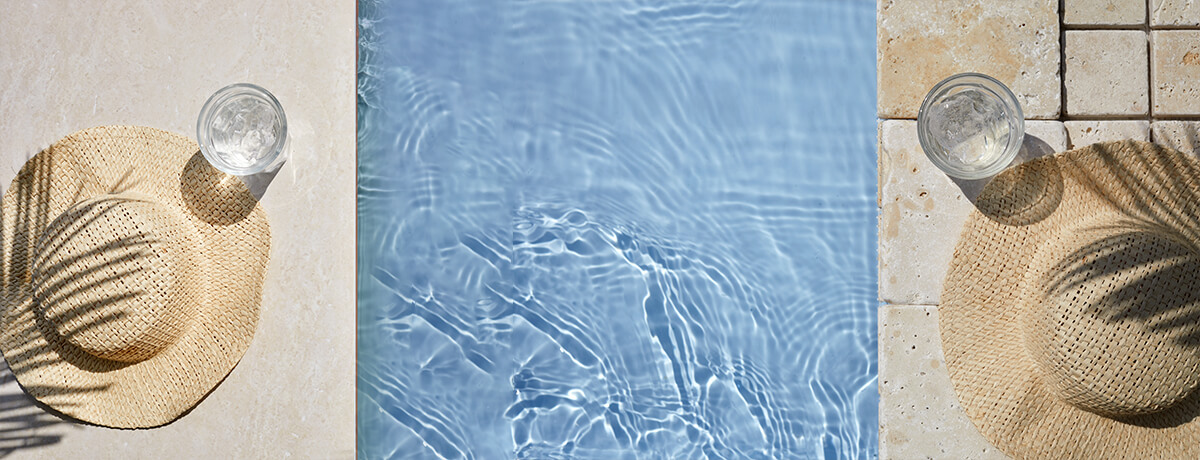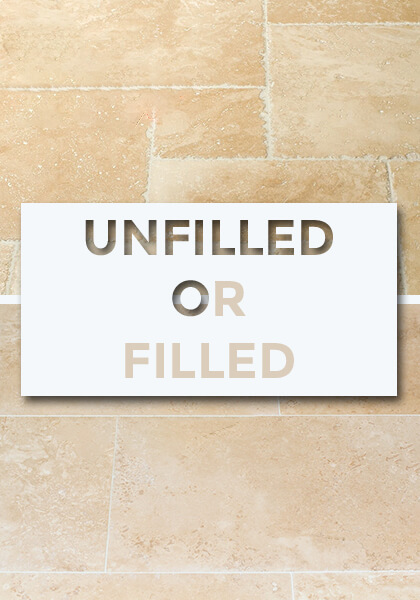Filled or Unfilled Travertine, and What Finish Is the Perfect Fit for Your Project
20th Oct 2021

Travertine is the ultimate choice for many homeowners, and with a good reason - a timeless, luxurious material that comes in a variety of colors and finishes.
And speaking of finishes, while researching the different travertine options, you might encounter terms like filled and unfilled that might seem unfamiliar or confusing.
That's why, in this blog post, our travertine stone experts will explain the different types of tiles and answer the crucial question when it comes to travertine - to fill or not to fill? Keep reading.

Before purchasing
Before buying travertine for your home or business, you should take the time to learn more about it. Doing so will enable you to make an informed decision.
For instance, knowing the difference between filled and unfilled travertine would be helpful, as it will enable you to envision how exactly the travertine will upgrade your project based on the look that you want to create. Furthermore, depending on where you plan on using the travertine it is advisable to use one or the other finish. Making the right decision at the start is important to have no regrets and choose the right finish for your project that will leave you with a smile of delight when it’s all finished.
Filled or unfilled travertine?
While purchasing travertine, you will be asked if you want it filled or unfilled. What's the difference?
Well, when coming from the quarry, travertine has natural porosity, it’s one of this natural stone’s characteristics. Before installing the stone, the small travertine voids (holes) can be filled at the factory, with a specific color-matched cement, which blends perfectly into the stone’s appearance, thus creating "filled" travertine. On the other hand, unfilled travertine leaves the travertine in its natural state which, together with the stone’s beautiful undulating veining, represent the stone's main characteristics, which make travertine so appealing for many clients.
Filled and unfilled travertine has different appearances, textures, and uses. Let’s explore them.
Appearance and texture
When filled, the surface of the travertine becomes more uniform. Unfilled travertine, on the other hand, looks more antique. The different finishes like polished, honed, or brushed can still be applied to both filled and unfilled travertine, the surface of the stone, therefore, does not change with filled or unfilled. It's a personal taste of what you like more, but the unfilled travertine might be the better option if you are after a more rustic appearance.
As mentioned above, the surface texture does not really change if it is filled or unfilled. However, as unfilled maintains it small crater-like porosity, the overall feel can be rougher.
Different uses
Although appearance and texture are important factors, you should also consider the place where you will install the travertine tiles.
If you are using travertine for outdoor cladding, unfilled travertine is the most popular option as it shows the stone’s beautiful characteristics and, being on a vertical surface, you do not need to worry about cleaning and water pooling etc. in general, outdoor use of travertine is unfilled as this natural stone brings character to the setting and adds an element of luxury to the natural environment.
If on the other hand, you are planning to use travertine for your kitchen bench top or bathroom, filled travertine is recommended because it is easier to clean. Therefore, you have to think not only of aesthetics but also practicality. Filled travertine is also recommended for pool coping and the pool area in general. If the stone is filled or not does not affect its slip resistance which is created by the surface finishes like brushed or sand blasted. However, filled travertine can feel nicer on the bare feet of the people who are enjoying time around the pool.
Another thing to consider is the surface finish you plan on using. Filled travertine works well with polished, honed, brushed but not with sand blasted or bush hammered as these finishes create mini craters as we mechanically chip away at the surface which would also chip the filling.
So, whether you will choose a filled or unfilled travertine depends on your personal preferences and the place you plan to install it. Therefore, there are a few aspects to consider when choosing but don’t be daunted. We are here to help and have decades of experience. Tell us where you are looking to use travertine in your project and our friendly and experienced staff will be more than happy to advise you and make sure you have thought of everything to make the right choice.
If you have any questions or are still in doubt about which cut is better for your project, we are here to make sure you choose the ideal material. You can contact us here.

